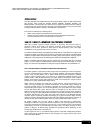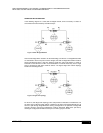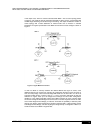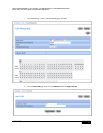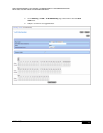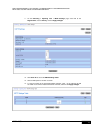
3
APRIL 2008
MSTP INTEROPERABILITY OF THE DELL™ POWERCONNECT™ 6200 SERIES SWITCHES
WITH CISCO IOS AND CISCO CATOS-BASED SWITCHES
3
INTRODUCTION
This paper describes the Multiple Spanning Tree Protocol (MSTP) support for Dell PowerConnect
62xx devices, which include the PC6224, PC6248, PC6224P, PC6248P, PC6224F, and
M6220 switches. This document also explains how to configure PowerConnect 62xx switches
to interoperate and connect with Cisco IOS and CatOS based switches when using the MSTP
industry standards. MSTP is defined in the IEEE 802.1s specification.
This document addresses the following topics:
• MSTP and its support in Dell PowerConnect 62xx devices
• Network operation of MSTP with configuration help for both Dell PowerConnect
and Cisco switches (Cisco Cat 3750 is taken as reference)
IEEE 802.1S MULTIPLE SPANNING TREE PROTOCOL OVERVIEW
IEEE 802.1s MSTP supports multiple instances of Spanning Tree Protocol (STP) to
efficiently channel VLAN traffic over different interfaces. Each spanning tree instance
behaves in the manner specified in IEEE 802.1w (Rapid Spanning Tree) with slight
modifications in the operation but not the end result.
The difference between RSTP and traditional STP (IEEE 802.1d) is that RSTP can configure and
recognize full duplex connectivity and ports that are connected to end stations. This allows RSTP
to perform a rapid transition of the port to the “Forwarding” state and to suppress Topology Change
Notifications. These features are represented by the parameters pointtopoint and edgeport.
MSTP is compatible with both RSTP and STP and behaves appropriately with STP and RSTP
bridges. You can configure an MSTP bridge to behave entirely as an RSTP bridge or an STP
bridge. This means that an IEEE 802.1s bridge also supports IEEE 802.1w and IEEE 802.1d.
DELL POWERCONNECT 62XX MSTP FUNCTIONAL DESCRIPTION
The MSTP algorithm and protocol provides simple and full connectivity for frames assigned to
any given VLAN throughout a bridged LAN comprising arbitrarily interconnected networking
devices, each operating MSTP, STP or RSTP. MSTP allows frames assigned to different
VLANs to follow separate paths, each based on an independent Multiple Spanning Tree
Instance (MSTI), within Multiple Spanning Tree (MST) Regions composed of LANs or MSTP
Bridges. These regions and the other bridges and LANs are connected into a single Common
Spanning Tree (CST). [IEEE DRAFT P802.1s/D13]
MSTP connects all bridges and LANs with a single Common and Internal Spanning Tree
(CIST). The CIST supports the automatic determination of each MST region, choosing its
maximum possible extent. The connectivity calculated for the CIST provides the CST for
interconnecting these regions, and an Internal Spanning Tree (IST) within each region. MSTP
ensures that frames with a given VLAN ID (VID) are assigned to one and only one of the
MSTIs or the IST within the region, that that assignment is consistent among all the networking
devices in the region, and that the stable connectivity of each MSTI and IST at the boundary of
the Region matches that of the CST. The stable active topology of the Bridged LAN with
respect to frames consistently classified as belonging to any given VLAN thus simply and fully
connects all LANs and networking devices throughout the network, though frames belonging to
different VLANs can take different paths within any region. [IEEE DRAFT P802.1s/D13]
All bridges, whether they use STP, RSTP or MSTP, send information in Configuration
Messages via BPDUs to assign Port Roles that determine each port’s participation in a fully
and simply connected active topology based on one or more spanning trees. The information
communicated is known as the spanning tree priority vector. The BPDU structure for each
protocol is different. An MSTP bridge transmits the appropriate BPDU depending on the
received type of BPDU from a particular port.
An MST region has one or more MSTP bridges with the same MST Configuration Identifier.
MSTI regions use the same MST instance, and all bridges in the region must be able to send
and receive MSTP BPDUs.





